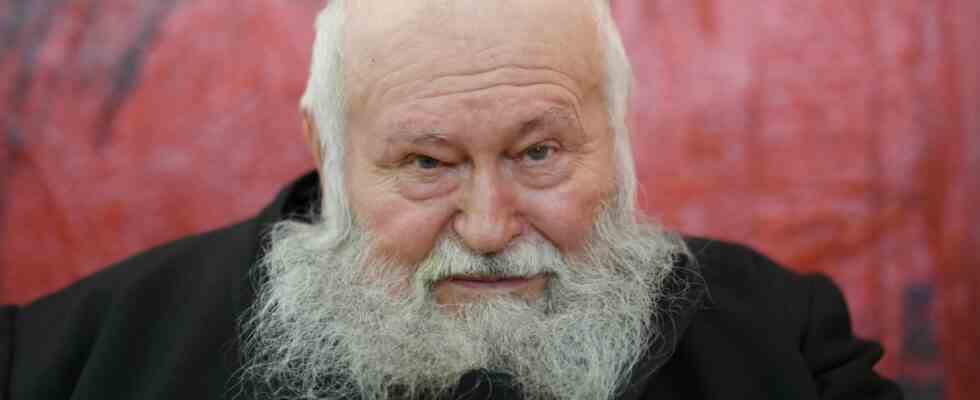He didn’t make it anymore. Hermann Nitsch knew that at the age of 83 he had to divide his strength. So the artist had to make the decision last summer whether to accept the invitation to the Bayreuth Festival or to carry out the planned new edition of his six-day play. Nitsch, who also composed and played the organ, decided in favor of Bayreuth and to accompany the concert performance of Richard Wagner’s “Valkyrie” with a painting event.
When he was on the Green Hill at the end of the third and final performance – supported by one of the singers and a crutch – he received applause and a few boos on stage, it was one of those moments that leave a deep impression. Because they are unique and unrepeatable.
Hermann Nitsch 2021 at the final applause in Bayreuth.
(Photo: Alexandra Föderl-Schmid)
Just like that conversation in which he, like me, knew that there would probably be no more. It was also the last chance to ask any questions. For example: why is red the most important color? “It’s not the prettiest color, but the most intense,” said Nitsch. “The color of life and death. And that color fascinates me.”
Finally he escalated into a veritable frenzy of colour
But anyone who has been allowed to take a look at his studio on the attic of his Prinzendorf Castle in the Weinviertel over the past two years has discovered more than a dozen colorful pictures. Nitsch no longer concentrated on one color but worked himself up into a real frenzy. He used the whole palette: loud and pastel tones, intensive color clusters with a relief-like feel, a flowery luminosity.
The man who provoked veritable scandals like no other Austrian performance artist because of the use of blood and animal carcasses and therefore emigrated to Munich in 1968, surprises with floral color symphonies – a completely different Nitsch. “Whether gentle or excessive, both are necessary,” said Nitsch, and in this last conversation he reflected on the fact that as he got older and then over 80, “the colors became more and more established, it was a pure conquest”. It was also important to him to capture the light. “Because without light there are no colors.” He always put peonies or gladioli as a source of inspiration, Nitsch said. But painting itself is a “dynamic and ecstatic process”.
He himself has turned ritualized excess into art in his orgy-mystery theater. The courtyard of Prinzendorf Castle, where cats, chickens, a goat and a peacock normally romp about, was to be the scene of his campaign again this year. Nitsch, who is buried in the castle garden, will no longer see the last realization of the first two days of his six-day game at the end of July. His strength was no longer sufficient. Read the obituary entitled “Blood Citizens” here.
Does he regret that he chose Bayreuth and not to stage his total work of art for the very last time, to celebrate his festival of life? Hermann Nitsch, the high priest of art, will be absent.

